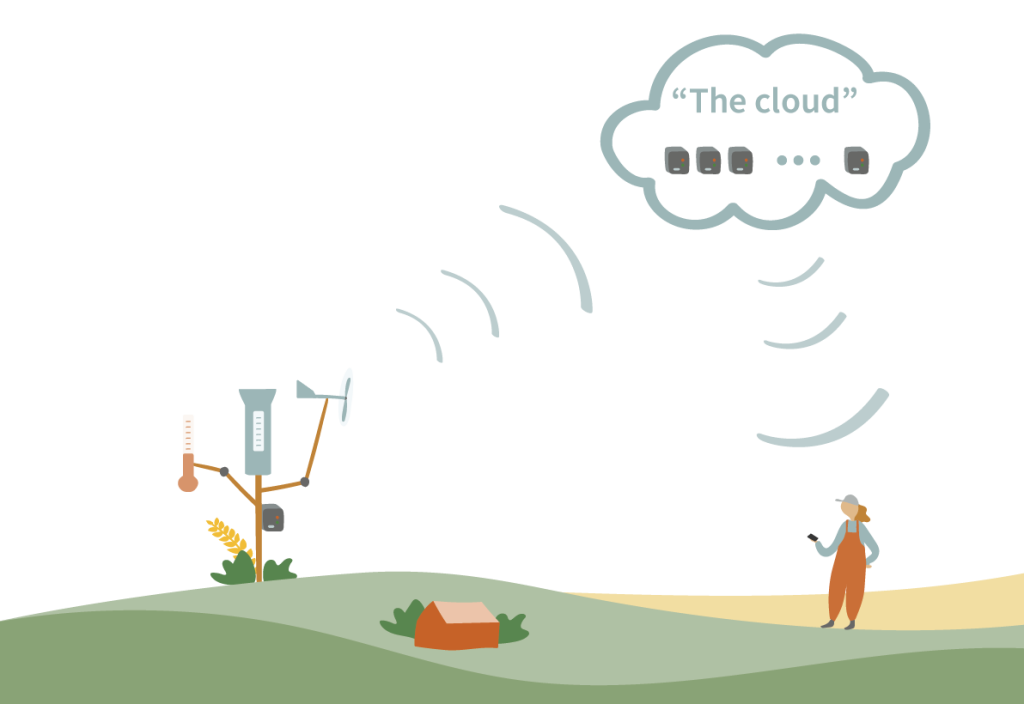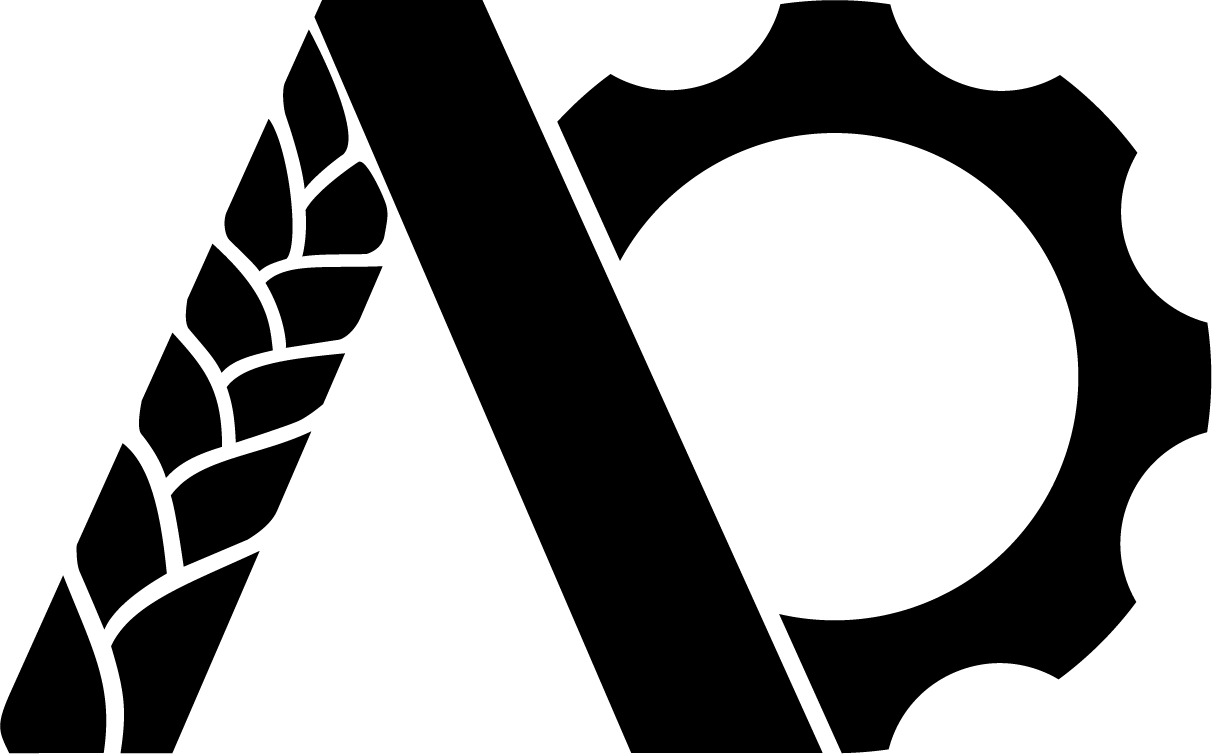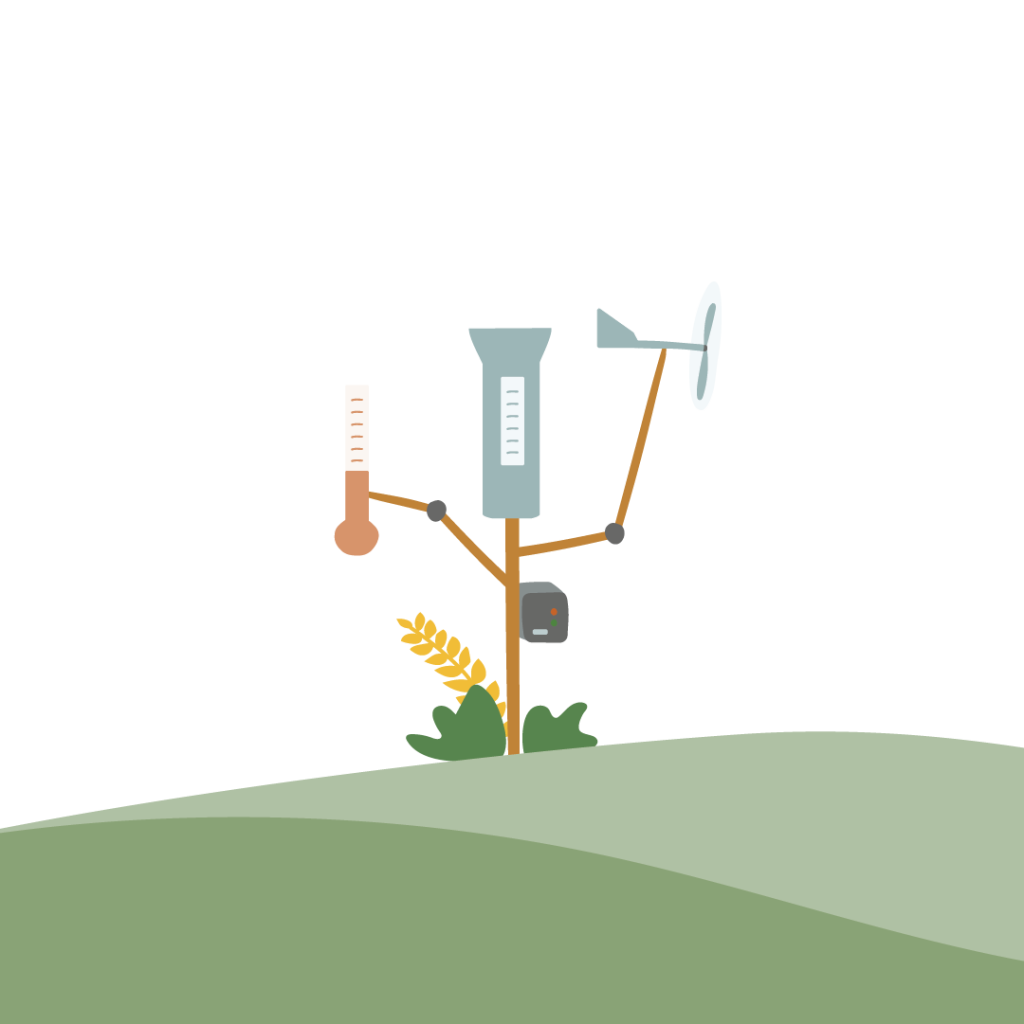Use your own weather station for measuring local weather
A weahter station can be used to measure the local weather at your farm or a specific field and provides good data for supporting decisions within for example your crop production. In this Agtech Letter we sowcase an an example with a weather station to concretize the concepts from Agtech Letters #2 and #3.
An example of a local weather station system
As everyone know, the weather is one of the main factors affecting crop production and crop yields and the availability of data about historic weather and weather prognosis are important to make good decisions on which actions and inputs that the crop needs, and when. Since the weather, and especially the precipitation, can vary a lot even between places quite that are quite close to each other, it is probably a good investment to install a local weather station to get more detailed weather data on your farm.
Many rules-of-thumb in crop production are based on quite simple weather data such as accumulated daily temperatures and accumulated precipitation to account for the specific weather during the crop season. There are also more advanced prognosis models for estimated the risks of for example fungicide that are reliant on weather data of different types.
Having access to local weather data from the current crop season might help you to more precise decisions and prognoses on for example the timing of different actions such as soil cultivation, spreading of fertilizers, and application of crop protection.
Schematic overview of a local weather station system
There are many weather stations on the market today, and they measure many different parameters such as temperature, precipitation, moisture, wind direction, and wind speed. To simplify the use of the weather station and making it easy to access the weather data and change settings, the weather station is often connected to the cloud and use a graphical user interface to present data to the user via an app on a smartphone. The cloud is more or less a collection of computers that are connected and can be used to store data and do computations. A more detailed description of the cloud will come in later Agtech Deep Dives.
The collection of weather data is automated and digitalized, and to make this work different sensors are needed that can measure and register the parameter that we are interested in, communication units that can transmit and receive data from the cloud, computing units (“computers”) that can compute and analyze data from the sensors, a cloud platform where data is stored and analyzed, and an application on your smartphone that presented and visualize the data that is stored in the cloud.
This is one simplified example of how such a system can look and what different components that can be used to collect and use local weather data. The details are of course different between different products, but many system use this structure or something similar.

An example of a local weather station system
In Agtech Letter #3 we listed some of the important categories of components that many agtech solutions have, and here we will use the weather station example to show how these components are part of this solution. To make it more exiting, we pretend that the weather station also includes a prognosis model for fungicide growth. For this system, the components used to create the complete solutions are:
The hardware
Sensors for measuring weather parameters, processors for computing, power supply units, modems for connectivity, smartphone for user interaction.
The software
Computer program (“code”) for collecting and analyzing data, for sending weather data to the cloud, and for displaying data to the user via the smartphone.
The data
Temperature, moisture, and precipitation measured regularly at a suitable time interval, for example one measurement each hour or every 15 minutes.
The data storage
Data is stored on a cloud platform that more or less consists of a bunch of servers (“computers”) that are connected to each other and can be accessed over Internet.
The models
The models are mathematical descriptions of how temperature, precipitation, moisture, and more are affecting the risks for getting problems with fungicide.
The algorithms
The algorithms are the descriptions of how data should be processed, how it should be included in the models, then analyzed, and finally presented.
Even though this example with a local weather station is simplified, it shows how the different components are interacting to construct a complete solutions. The technical details of the components are handled by the developers of the system, but getting a good understanding of what they mean and are will give you a much easier life when you are learning about agtech system int he future.
Agtechers’ Actions
Getting access to local weather from your farm is a good step to become more data driven and to use your data more actively. We believe it is well spent money to invest in a good-quality weather station, and we challenge you to do it already before next season!
In the next Agtech Letter we look at some of the macro trends that are driving the development in agtech today, and also look into why it is happening right now.


